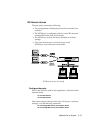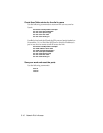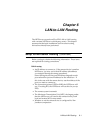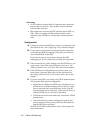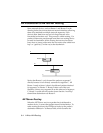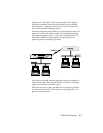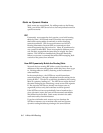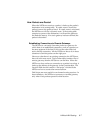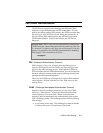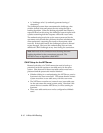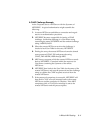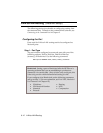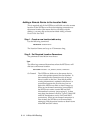LAN-to-LAN Routing 6-7
How Packets are Routed
When the NETServer receives a packet, it looks up the packet’s
destination in its routing table. If a static route is found, the
packet is sent to the gateway listed. If a static route is not found,
the NETServer will use a dynamic route. If the routing table
contains no routes to the destination, it will send the packet to
the Default Gateway. If no such gateway has been defined, the
packet is discarded.
Establishing Connections to Remote Gateways
The NETServer can easily forward a packet to a gateway for
which there is an established connection, such as a gateway on
the same segment of the local LAN or at the other end of an
active dial-up connection. All the NETServer has to do in these
situations is send the packet out the right port.
However, when there is no existing connection, the NETServer
has to do a bit more work. The Location table contains a list of
remote gateways that the NETServer can dial into. When the
NETServer does not have a connection to a packet’s next hop, it
looks up the address of the gateway in the Location table. The
Location Table should contain a “dial script” which tells the
NETServer how to contact the remote location.
Dial Scripts are most useful for on-demand routing sessions. In
these situations, the NETServer connects to a remote gateway
only when it has packets queued for that location.



